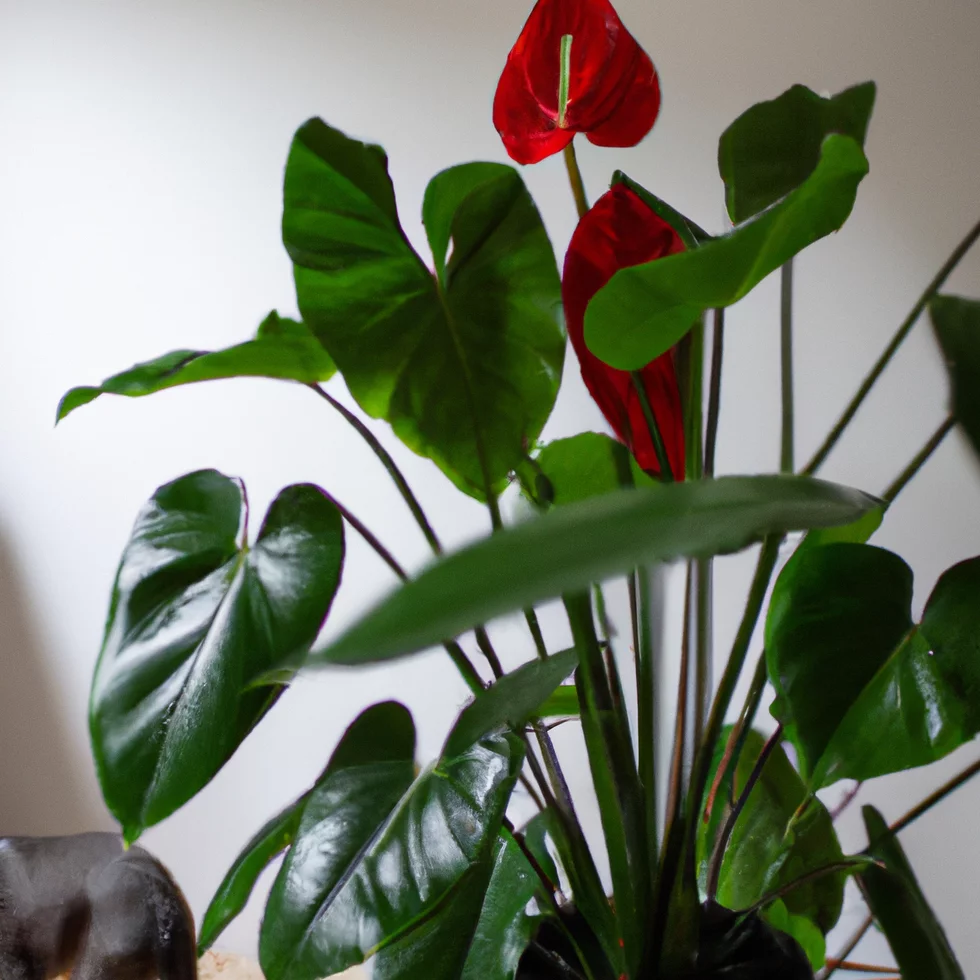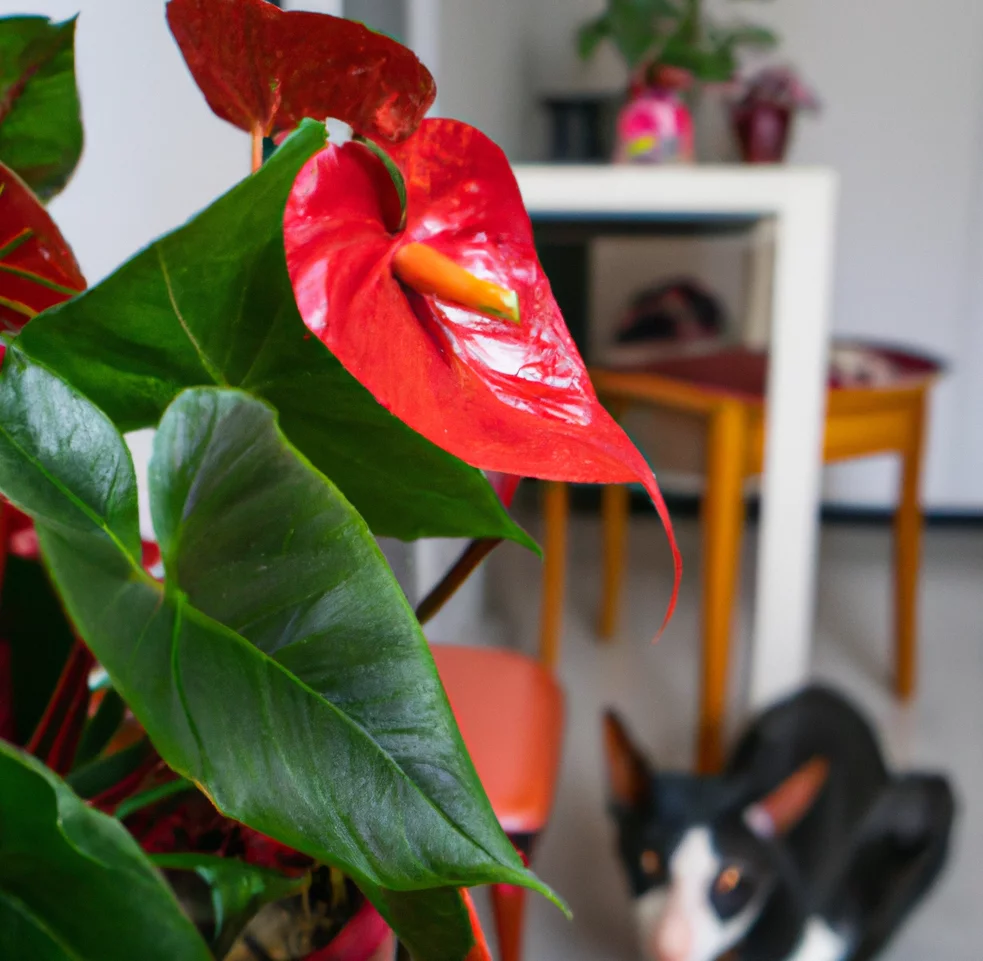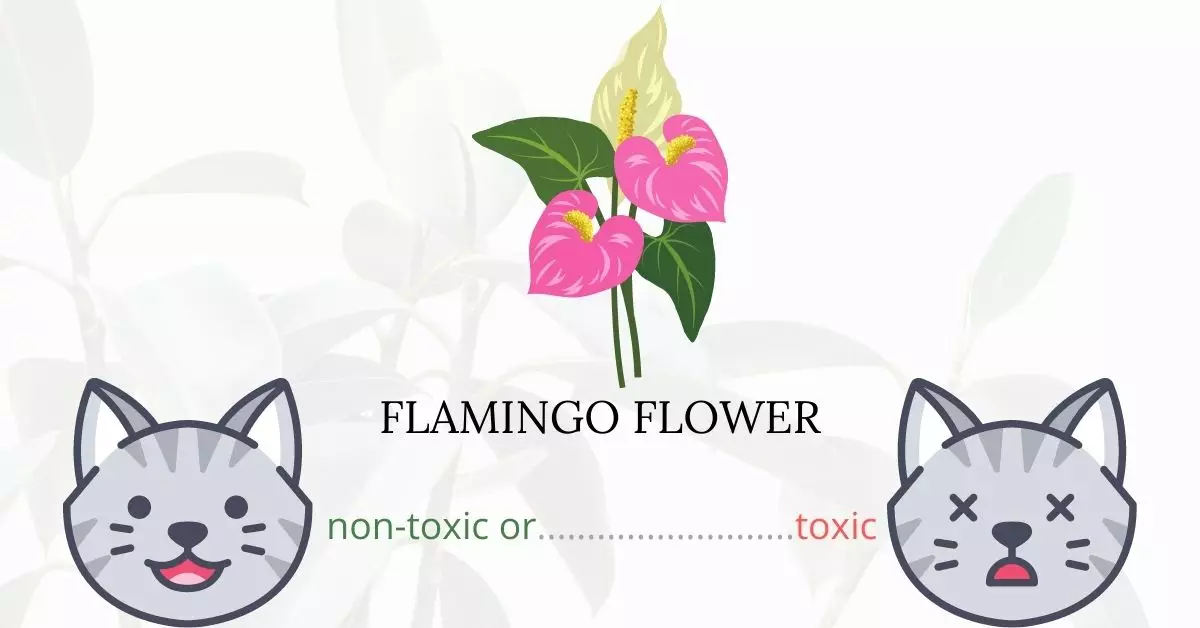Yes, the Flamingo Flower is toxic to cats. Commonly known as Flamingo Lily, Tail Flower, Oilcloth Flower, Pigtail Plant, and Painter’s Pallet, this popular houseplant is often chosen for its aesthetic appeal. Nonetheless, it can pose significant risks to our feline friends due to the presence of insoluble calcium oxalates, a characteristic trait of members of the Araceae plant family.
When ingested, these compounds can cause ulcers in a cat’s mouth, throat, and stomach. This leads to an inflammatory response which may cause swelling in the cat’s airways. Additionally, if a cat consumes large quantities of the plant, despite its bitter taste, it can result in organ damage and even organ failure.
This article was crafted in collaboration with a team of experienced DVMs (doctors of veterinary medicine). Through their invaluable insights, we ensure that the information presented here is both accurate and current. Furthermore, we have cross-referenced our findings with high-authority websites such as ASPCA and PetMD to ensure a comprehensive understanding of the potential risks associated with the Flamingo Flower and its effects on cats.
Clinical Signs of Flamingo Flower Poisoning in Cats

When a cat comes into contact with, smells, or consumes the Flamingo Flower plant, several symptoms can manifest due to the insoluble calcium oxalates present in the plant. Here’s a breakdown of each symptom and the reasons behind their occurrence:
- Throat and Mouth Ulcerations: The direct contact of the calcium oxalates with the cat’s oral tissues causes these painful sores. They can develop when a cat chews or bites into the plant.
- Intense Burning and Pain in the Mouth: The needle-like crystals of calcium oxalates can pierce the soft tissues of the mouth, leading to an immediate burning sensation and pain.
- Vomiting: As a protective reflex, the cat may vomit to expel the ingested plant material and reduce further absorption of the toxins.
- Excessive Salivation: This is a common body response to irritation in the mouth, as saliva can help soothe the burn and wash away the offending substance.
- Shaking of Head: Due to the discomfort and irritation in the mouth and throat, a cat might shake its head in an attempt to get relief.
- Swelling of Throat: The inflammatory response to the ingested oxalates can lead to swelling, which is the body’s way of isolating and dealing with the harmful substance.
- Restricted Airway: If the throat swells significantly, it can narrow or block the airway, making it difficult for the cat to breathe.
- Lack of Consciousness: Severe respiratory distress, caused by a restricted airway, can lead to a lack of oxygen in the brain, causing the cat to lose consciousness.
- Renal Failure: Prolonged exposure to or ingestion of large amounts of calcium oxalates can have detrimental effects on the kidneys, leading to renal failure.
- Coma: In extreme cases, the combined effects of the toxins, lack of oxygen, and possible renal failure can cause a cat to slip into a coma.
- Death: If not treated promptly and effectively, the cumulative effects of Flamingo Flower poisoning can unfortunately lead to death.
It’s crucial for cat owners to be aware of these symptoms and to seek immediate veterinary care if they suspect their feline friend has come into contact with or ingested the Flamingo Flower plant.
First Aid and Treatment of Flamingo Flower Poisoning in Cats

Your cat’s immediate life-threatening symptoms must first be stabilized by your veterinarian. This will necessitate the administration of anti-seizure medications through needle injection or an IV. Veterinarians frequently choose to use an IV because it allows for convenient administration of any extra medications that may be required during the course of the treatment. Antihistamines and other medications that reduce inflammation and encourage airway opening will be used to stabilize your cat’s breathing.
The treatment may also include rinsing out your cat’s mouth with water to reduce irritation. Inducing vomit and giving activated charcoal to your cat may also be done by the veterinarian.
Recovery from Flamingo Flower Poisoning in Cats

The outlook for your cat’s recovery from flamingo flower poisoning will be affected by the volume of plants consumed and how promptly you seek veterinarian treatment. Your cat should recover completely in cases of minor exposure. Your cat may require supportive drugs to help sustain kidney and liver function if the exposure was prolonged or in substantial amounts.
Prevention of Flamingo Flower Poisoning in Cats
Avoid placing flamingo flowers in your house. If your cat is mostly outside, limit his or her access outdoors by utilizing cat cages or playpens. Train your cats to stay away from toxic plants and invest in building plant terrariums at home.
If you love plants but have cats at home, check out these lists:





